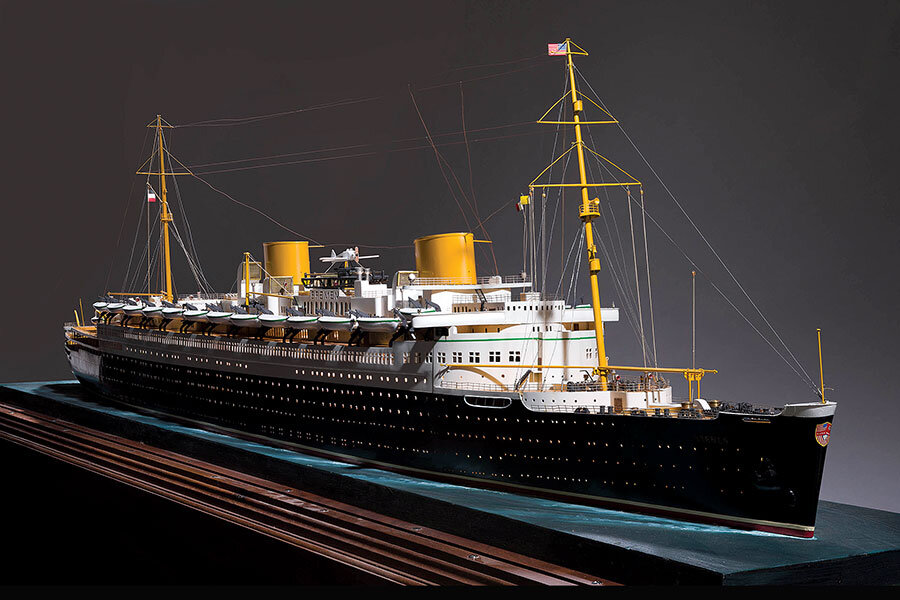Exhibit offers look at the age of the ocean liner
Loading...
A new exhibition that explores the evolution of ocean liners will have its only US showing at the Peabody Essex Museum in Salem, Mass., through Oct. 9. “Ocean Liners: Glamour, Speed, and Style” traces the dramatic changes in their development, from “hazardous” early steam-
powered vessels to symbols of national identity to luxuriant playgrounds.
Almost 200 works, including sculpture, paintings, furniture, models, textiles, wall panels, and posters, reveal the transition in vivid detail.
“Ocean liners were conveyances of far more than people and goods,” says Dan Finamore, the Russell W. Knight curator of maritime art and history at the Peabody. “They were transporters of ideas, cultural values, and aesthetics. People who are interested in design and art of the 19th and 20th centuries from a number of different perspectives will find some good entry points to this show.”
The exhibition is divided into sections, each assessing ocean liners from a different perspective. Prints and posters created by prominent artists show how iconic design elements, such as ocean liners’ bow profile, helped promote travel.
A panel from the archway of a recital lounge on the Titanic – the biggest preserved piece of interior woodwork, according to Mr. Finamore – appears in a section devoted to design. “It’s beautifully carved,” Finamore says. “Just what you would expect to see in a Beaux Arts interior, with little stars and a cornucopia of musical instruments.”
Artifacts from French Art Deco artists exemplify ocean liners in the period between World War I and World War II , while a wall panel depicting the zodiac from the Andrea Doria highlights the section on the postwar years.
New styles of clothing, menus, and entertainment – including a piano from the SS Normandie – mark the transformation of life on board ships, culminating in a look at the modern cruise experience.







